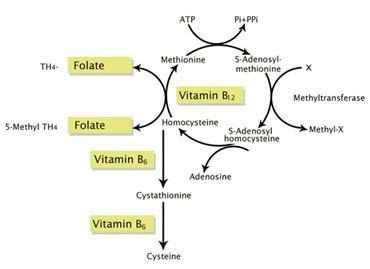Link text
MTHFR and late onset Alzheimers
Confirmation of the association of epigenetic modifications has been reported in both A1298C Cand 677T alleles, without a preference for a particular mutation in late onset Alzheimers (AD). A closely relatated pathogenic factor identified in AD is hyperhomocysteimia, or elevated homocysteine (tHcy) resulting from deficiencies of enzymatic regulating methyl donor B-group vitamin reactions. Elevated homocysteine is an independent vascular risk factor linked to coronary heart disease, peripheral vascular disease, stroke, and small-vessel cerebrovascular disease.
Additionally, hyperhomocysteimia is a risk factor for dementia and cognitive decline in the elderly, particularly in the presence of low levels of folate and cobalamin. The authors noted :-
“The most important aspect of the potential associ-
ation of epigenetic effects to MTHFR gene mutations
is the possibility of new treatments of LOAD. In con-
trast with the widespread failure of amyloid therapies
for AD, a recent clinical trial demonstrated that
treatment with B-group vitamins effectively halted
conversion from MCI to AD, particularly
among patients with raised tHcy. Other options that
could improve DNA methylation include the use of
SAMe and methylfolate, which have been demon-
strated to have antidepressant effects. Given
the role of brain DNA methylation in memory
and AD, confirmation in larger series of elevated
prevalence of MTHFR gene mutations as a marker for
LOAD could open potential new paths for prevention
and treatment of this devastating disease.”
Roman GC. MTHFR Gene Mutations: A Potential Marker of Late-Onset Alzheimer’s Disease? J Alzheimers Dis 2015;47(2):323-7.




